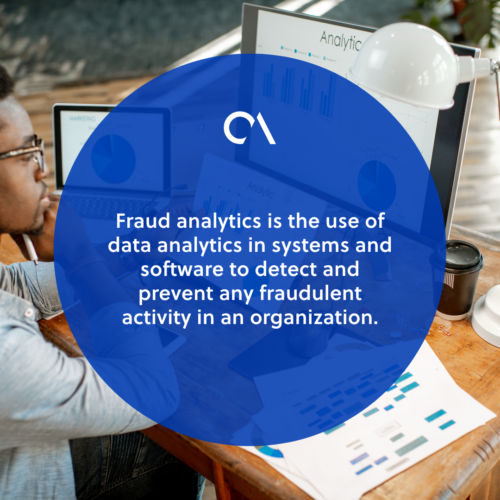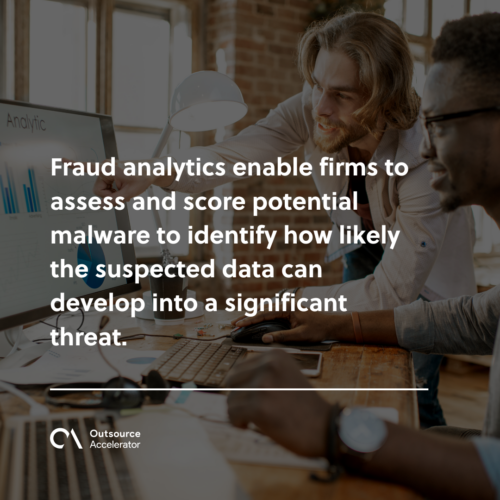Understanding the basics of fraud analytics

Fraud has emerged as a significant threat to businesses of all sizes. It is an intentional deceit an individual or organization uses to gain an unfair advantage. This may result in business financial loss, reputational harm, and unwanted legal fines.
Good thing there is a technique called fraud analytics that is fundamental to any successful fraud prevention plan. It is a field that has emerged to help organizations detect, prevent, and mitigate fraud.
This article discusses the basics of fraud analytics — exploring its types, key concepts, and significant benefits.
What is fraud analytics?
Fraud analytics is the use of data analytics in systems and software to detect and prevent any fraudulent activity in an organization.
This is where analytical tools are applied to historical data, allowing analysts to identify fraud patterns and enabling the company to establish security against fraudulent activity.
This fraud detection technique uses big data and machine learning to detect malicious software (malware).

Fraud analytics process
The fraud analytics process includes collecting and preserving pertinent data and mining it for trends, inconsistencies, and anomalies.
The findings are converted into insights that may help a firm manage possible dangers before they happen and create a proactive fraud and bribery detection environment.
Fraud analytics then sends signals when unusual or suspicious activity is detected. Statistics enables the creation of rules to stop undesired events as well as helping system and service design models to help reduce risk.
To create models, the key strategy is to combine business intelligence data with other internal data on consumer behaviors and transactions. As a corporation grows, it will have more data accessible.
As such, fraud analytics must combine these various data sets into one pool to draw conclusions from them.
3 types of fraud analytics
There are three types of fraud analytics explained below:
Descriptive
This is the initial stage of fraud analytics, and it entails evaluating historical data to determine any suspicious activities in the past. Moreover, this type of fraud analytics may assist firms in identifying the most prevalent types of cyber attacks.
Predictive
Predictive fraud analytics forecasts future occurrences using statistical models and machine learning techniques. Predictive analytics may assist firms in identifying possible malware attacks and taking preventative steps.
Prescriptive
This is the final phase of fraud analytics, which entails recommending actions or judgments based on fraud analysis.
Organizations may use prescriptive analytics to take quick action to avoid more fraud and reduce the effect of fraud on their operations.
Key concepts in fraud analytics
Here are the key concepts of fraud analytics:
Data collection and processing
For fraud analytics to work, data must first be collected and processed. Transaction records, client profiles, and social media data are just a few examples of the types of information that businesses need to acquire.
To guarantee the report’s accuracy, each piece of data must be analyzed and cleansed —- ensuring that the available information for fraud detection is reliable.
Data analysis and modeling
Data analysts employ statistical methods and machine learning algorithms in data analysis and modeling. This part of fraud analytics assists firms in discovering earlier any fraudulent attempts and tracking their origin.
According to McKinsey, advanced analytics may connect data from various sources and provide proper tools to avoid, anticipate, identify, and prevent fraud.
Risk assessment and scoring
Fraud analytics enable firms to assess and score potential malware to identify how likely the suspected data can develop into a significant threat. This can help businesses concentrate their efforts on the most dangerous forms of fraud.
Here are a few examples of criteria in risk assessment and scoring:
- Nature of transaction
- Previous and current transactions
- The sum of money at stake
- Customer’s track record

3 significant benefits of fraud analytics
Fraud analytics can provide several benefits to organizations, including:
Early fraud detection
One of the most significant advantages of fraud analytics is that it helps discover fraud early on.
Organizations can benefit from fraud analytics by identifying suspicious trends or actions. As such, the effects of fraud on a company’s operations and reputation can be mitigated if discovered early.
Reduction in financial losses
Another vital advantage of fraud analytics is the decrease in financial losses. Organizations can suffer considerable financial losses due to fraud, including direct costs from fraudulent actions and indirect losses from reputational harm.
Fraud analytics may assist firms in identifying high-risk regions and taking necessary anti-fraud actions. This can help firms maintain financial stability and avoid reputational risk.
Improved customer trust and loyalty
Organizations may demonstrate their commitment to defending their customers’ interests by employing fraud analytics.
This can help firms cultivate trust and loyalty with their consumers while improving their market reputation. By safeguarding their consumers’ data through fraud analytics, organizations may boost customer satisfaction and retention.







 Independent
Independent




